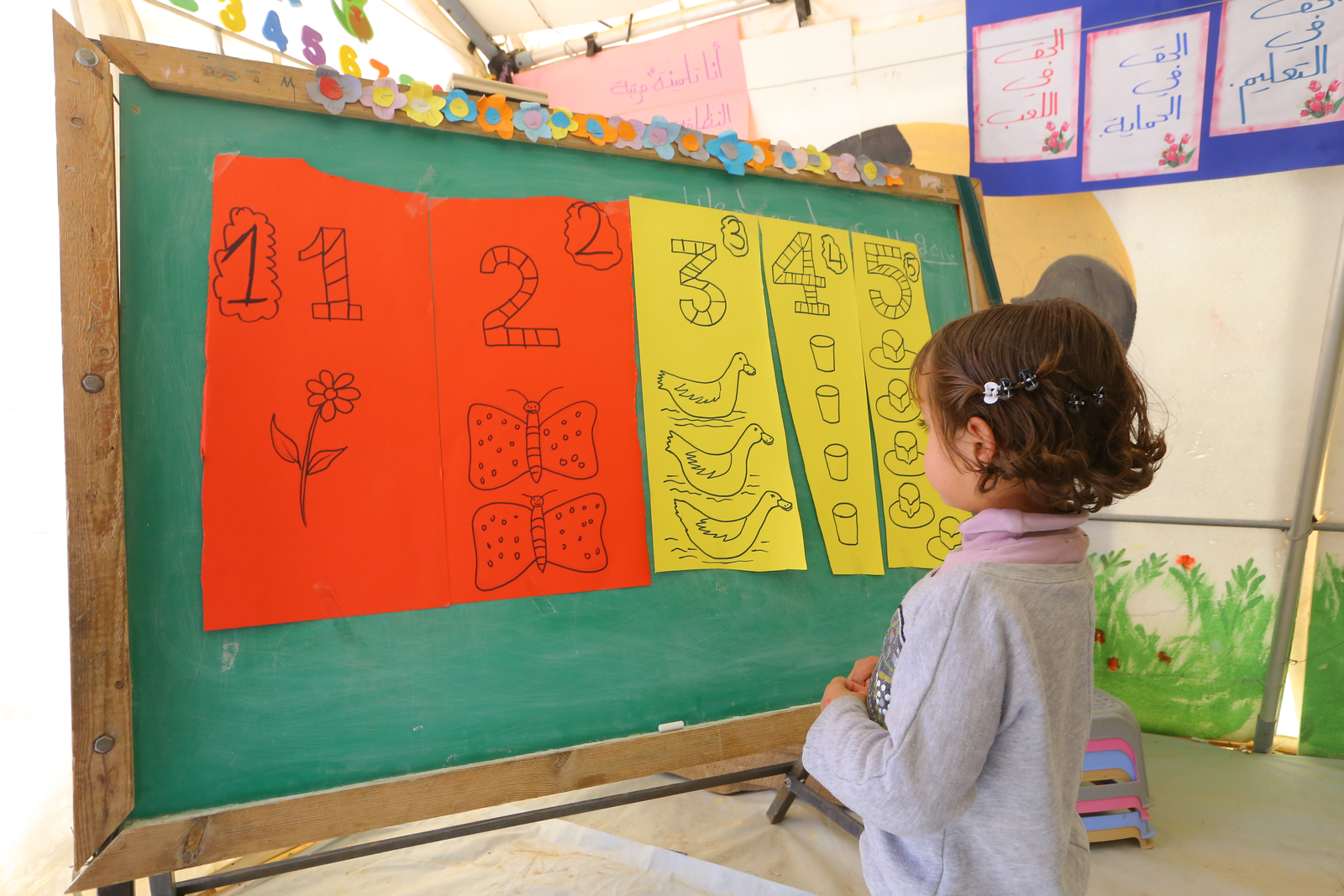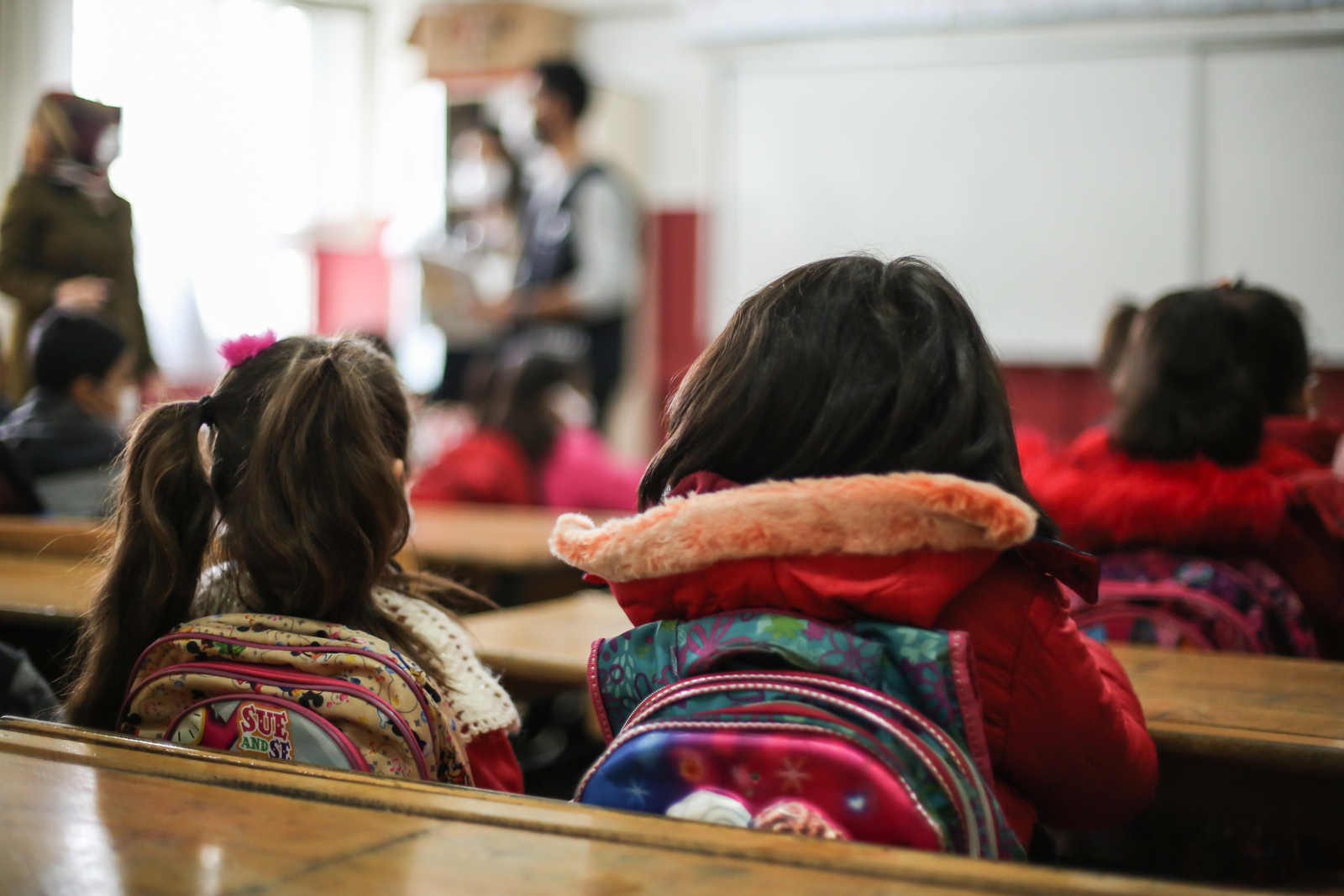
Girls’ education

This page looks at why girls and young women miss out on school - even though educating girls has huge benefits for health, prosperity and security. This page explains more about the impact of a safe, quality education for girls and examines the barriers that prevent them from getting an education.
The issue of girls and education
Globally, 129 million girls are out of school, missing out on opportunities to thrive and build a brighter future.
An educated female population increases a country’s productivity and fuels economic growth. Some countries lose more than $1 billion a year by failing to educate girls to the same level as boys.
Despite this, girls and young women in many parts of the world miss out on school every day. Around 61 million girls are of school, according to UNICEF in 2016 – 32 million girls of primary school age and 29 million of lower secondary school age.
Often, girls are marginalised and are out of school simply because they are girls and it is not the cultural norm. Their chances of getting a quality education are even smaller if they come from a poor family, live in a rural area or have a disability.
Girls are four times more likely to be out of school than boys from the same background. The poorest girls also have the least likelihood of completing primary school.
There are often legal, religious and traditional practices that discriminate against girls having the chance to get an education.
What progress has been made on girls' education?
There has been improvement in gender equality in education. Between 2000 and 2015, the number of girls for every 100 boys in primary education rose from 92 to 97 and from 91 to 97 in secondary education.
The number of countries that achieved gender parity in both primary and secondary education from 2000 to 2015 increased from 36 to 62. But the overall improvement does not tell the full story. Some parts of the world, including sub-Saharan Africa and South and West Asia, are not making as much progress.
Only two of 35 countries in sub-Saharan Africa have equal numbers of girls and boys in school – the lowest proportion of countries with gender parity – according to the Education Commission’s Learning Generation report in 2016.
In South and West Asia, 80% of out-of-school girls are unlikely ever to start school, compared to just 16% of boys.
Many countries, including Afghanistan, Pakistan and Nigeria, have seen attacks on girls’ education and threats to close down schools.
The world has committed to continue to make progress through the United Nations Sustainable Development Goals. Goal 4 aims to “ensure that all girls and boys complete free, equitable and quality primary and secondary education”. Goal 5 is focused on achieving gender equality and empowering all women and girls.
"Every girl, no matter where she lives, no matter what her circumstance, has a right to learn. Every leader, no matter who he or she is or the resources available to him or her, has a duty to fulfil and protect this right." Malala Yousafzai, Student, Nobel Peace Prize Laureate, and Co-Founder of the Malala Fund, in the foreword to the research report 'What Works in Girls' Education
The importance of girls' education worldwide
Every child has a right to learn and get a good quality education, regardless of gender, where they live or their circumstances.
Because educated girls can make informed choices from a far better range of options, educating girls saves lives and builds stronger families, communities and economies. With an education, girls will understand their rights, have a greater sense what is needed to support health and wellbeing, and they will have greater opportunities to be employed in a fulfilling way and achieve their full potential.
Here are just some of the benefits of giving girls an equal opportunity to be educated:
- Economic growth
Education for girls and boys increases productivity and contributes to economic growth. Globally, women are not in the formal job market as much as men but many studies show there are economic benefits if they are allowed to join the labour force.
Educating girls and young women increases a country’s productivity and contributes to economic growth. Some countries lose more than $1 billion a year by failing to educate girls to the same level as boys.
A woman with an education can get a better job with higher wages and has the effect of addressing gender imbalances in the labour force. Increased levels of education have a greater positive impact on women’s wages.
According to an International Labor Organization report, “Educating girls has proven to be one of the most important ways of breaking poverty cycles and is likely to have significant impacts on access to formal jobs in the longer term.”
- Health knowledge saves children’s lives
A child born to a literate mother is 50% more likely to survive past the age of five. Over the past four decades, the global increase in women’s education has prevented more than four million child deaths.
Educated mothers are better informed about sanitation, nutrition and immunisation for their children, leading to fewer child deaths from preventable diseases such as diarrhoea, pneumonia and malaria or from malnutrition.
- Smaller and more sustainable families
Girls’ education helps reduce population growth. Educated women have fewer pregnancies and are also less likely to become pregnant as teenagers.
In many countries in sub-Saharan Africa, the birth rate among girls with secondary education is four times lower compared to those with no education.
- Reduced infection rates for HIV/AIDS and malaria
When researchers analysed the declining HIV/AIDS infection rate in Zimbabwe from 29% of the population to 16% from 1997 to 2007, they found that high levels of girls completing secondary education was an important factor in making awareness campaigns and efforts to reduce infection by partners more effective.
Better-educated girls and women are also more likely to use techniques to prevent malaria, such as using bed nets, and are less likely to become infected.
- Fewer girls in child marriages
Girls who are better educated are less likely to be married as children and are more likely to have opportunities for a healthier and more prosperous life for themselves and their families.
Across 18 of the 20 countries with the highest prevalence of child marriage, girls with no education are up to six times more likely to marry as children than girls with a secondary education.
- Better prepared for natural disasters and climate change
Higher levels of education generally help prepare families for coping with shocks. Girls’ education in particular is associated with reduced injury and death and increased family and community resilience from the hazards of natural disasters and extreme weather that results from climate change.
A 2010 World Bank study of developing countries from 1960 to 2003 found that countries with higher levels of female schooling were less likely to suffer high rates of death, injury, and displacement due to weather disasters.
- More control over their lives
When girls go to school, they grow into women who have more say over their lives and have an increased sense of their worth and capabilities. They are less likely to be subjected to domestic violence and will participate more in decision-making in households.
- More skills to be leaders
Education helps women to gain the skills needed to take on leadership roles at local and national levels. Better-educated women are more likely to join bodies, whether volunteer or elected, where they can take part in making decisions that affect their lives and those of their communities.
What are the barriers to girls' education?
They include:
- Poverty and child labour
Girls from the poorest and rural households face the greatest disadvantages because parents are less educated and therefore may value education less. Rural communities have fewer support systems, often forcing girls to work or manage their household.
Many girls begin working as early as five years old – mainly in agriculture or in homes as domestic servants. Child domestic workers have limited or no access to education as employers often do not allow them to enrol in school.
- Caring for relatives
Women and girls disproportionately share the burden and care of ill family members and relatives. This affects not only whether they can attend school but also the time and energy they can devote to schoolwork.
- Water and sanitation
Due to inadequate water, sanitation and hygiene facilities, poor girls can spend six hours each day collecting water, leaving little time for school. Those girls who do go to school often drop out when they start to menstruate because there is no safe place to keep clean at school.
- Conflict and emergencies
Girls living in conflict-affected countries are 90% more likely to be out of secondary school than those living in peaceful areas. Schools can be destroyed in conflict situations, while targeted attacks on girls’ schools can make parents afraid to send their daughters to school. In humanitarian emergencies, including natural disasters, increased poverty for families and lack of employment opportunities means girls are at higher risk of early marriage or ending up in prostitution.
- Child marriage
Every year 15 million girls under the age of 18 become wives – an average of 40,000 every day. Marriage interrupts and ends girls’ education so they don’t gain the skills that could lift them out of poverty – over 60% of child brides in developing countries have no formal education. Many cannot return to school after marriage because they cannot afford to pay school fees. Child marriage also means girls have early and frequent pregnancies, which contributes to higher rates of girls dropping out of school.
- Pregnancy
Each year about 16 million girls between 15 and 19 give birth. Stigma, lack of support and discriminatory laws around pregnancy exclude girls from school, forcing them to stay at home and care for their children. Childcare and flexible school programmes or adult classes are not available to them.
- Disability
Globally between 93 million and 150 million children live with a disability. The World Health Organization and the World Bank estimate that in some countries “being disabled more than doubles the chance of never enrolling in school”.
Girls with disabilities face discrimination both because of their gender and their disability, making them among the most marginalised groups of children. Respondents to the World Health Survey 2002-2004 indicated that 41.7% of girls with a disability completed primary school compared to 52.9% for those without a disability.
The benefits of educating girls
It is estimated by UNESCO that 122 million girls and young women are not in primary and secondary school. Not only is this devastating for the girls that are missing out on an education, but it also affects the people and communities around them.
Failure to educate girls costs countries between US$15 trillion to US$30 trillion in lifetime productivity and earnings, as an entire gender is locked out from the skills and knowledge an education provides. This has a further impact on the families that they raise and care for as they are unable to financially provide for them.
Not educating girls also increases gender inequality, decreases the health of children and families and increases violence. Overall, it is clear that when we refuse to educate girls, we not only impact their lives and futures, but also the lives and futures of the people around them.
Useful links
What Works in Girls’ Education: Evidence for the World’s Best Investment: Read the research report on the Brooking Institution website.
United Nations Girls Education Initiative: More information about the issue and the efforts to address it.
Next resource
